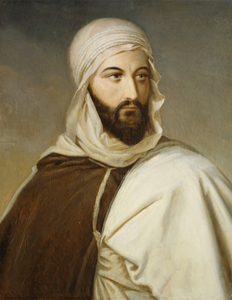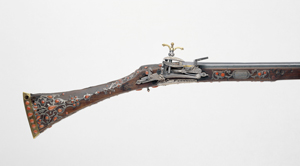All along the exhibition,
historians share their analysis |
 |
 |
A violent conquest
D. Guignard et JC. Jauffret
|
Until the late 1830s France hadn’t really planned to conquer. It all changed in 1839 when these African lands were called “Algeria” for the first time in a government decree.
|
 Abd el-Kader (1807-1883) par Godefroid Marie Eleonore (1778-1849), peint vers 1830-1844 à Paris Abd el-Kader (1807-1883) par Godefroid Marie Eleonore (1778-1849), peint vers 1830-1844 à Paris© Paris - Musée de l'Armée, Dist. RMN-GP / image musée de l'Armée |
 Fusil à silex ayant appartenu à Abd el-Kader, fabriqué avant 1883 ; calibre 18 mm ; poids 3,8 kg Fusil à silex ayant appartenu à Abd el-Kader, fabriqué avant 1883 ; calibre 18 mm ; poids 3,8 kg© Paris - Musée de l'Armée, Dist. RMN-GP / Pascal Segrette |

